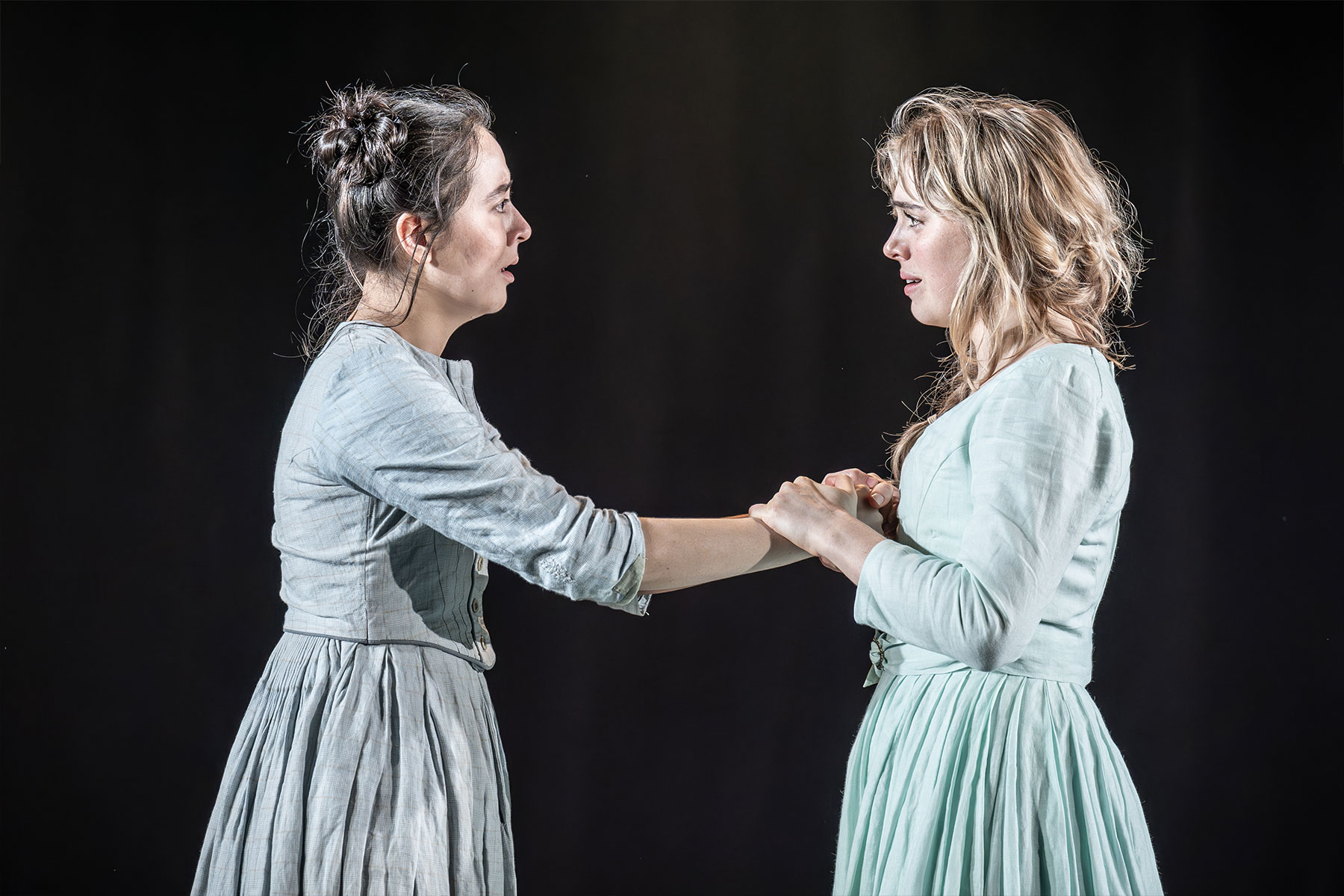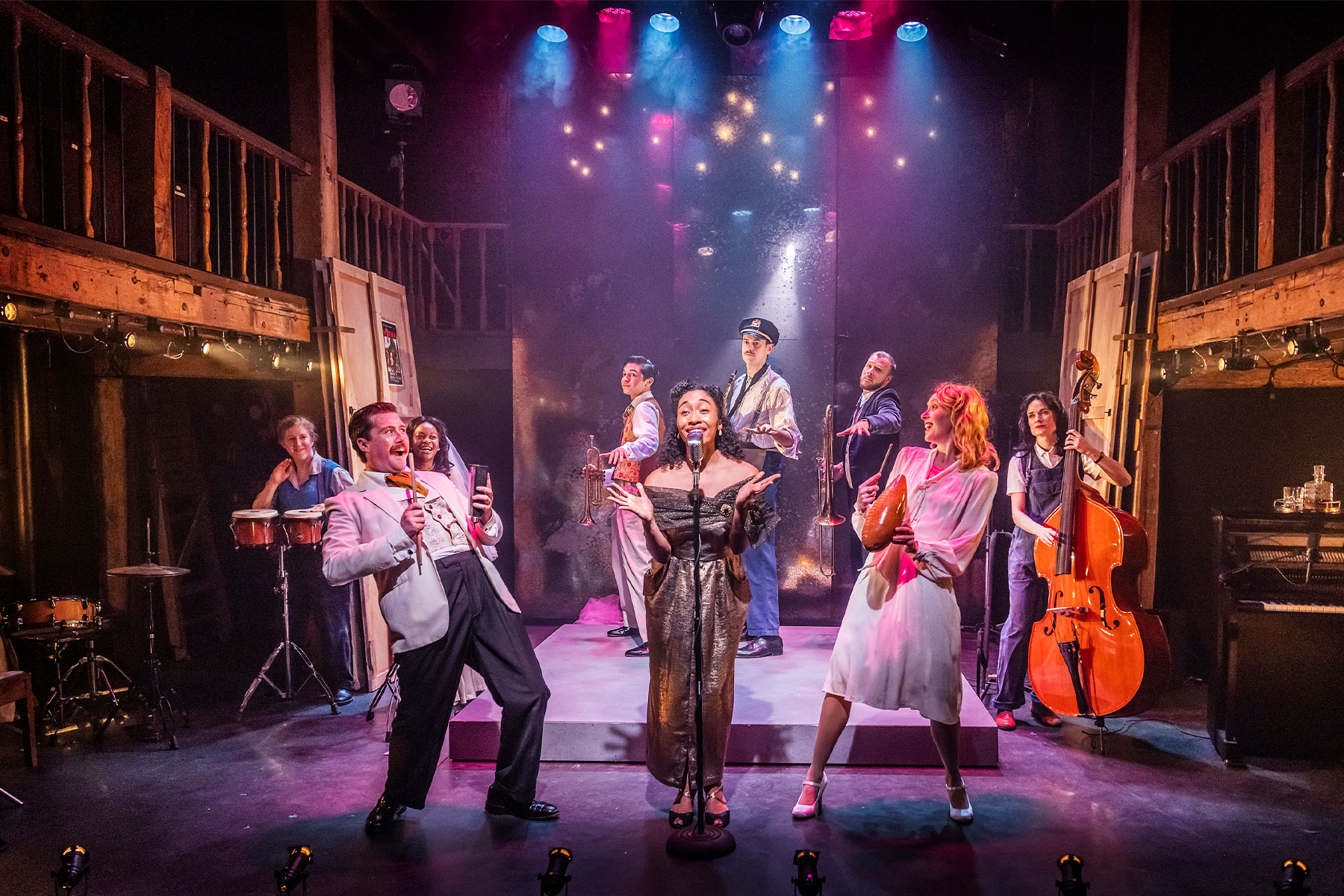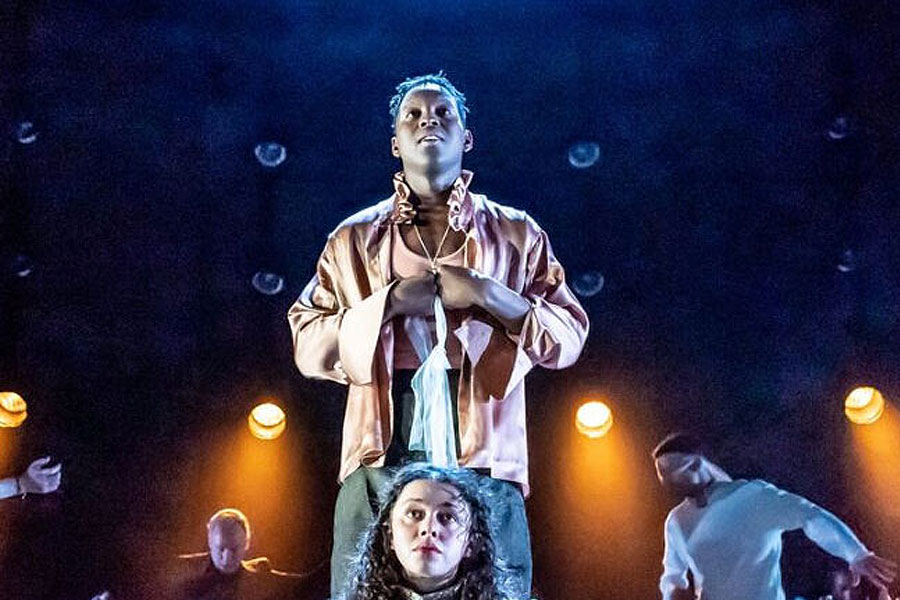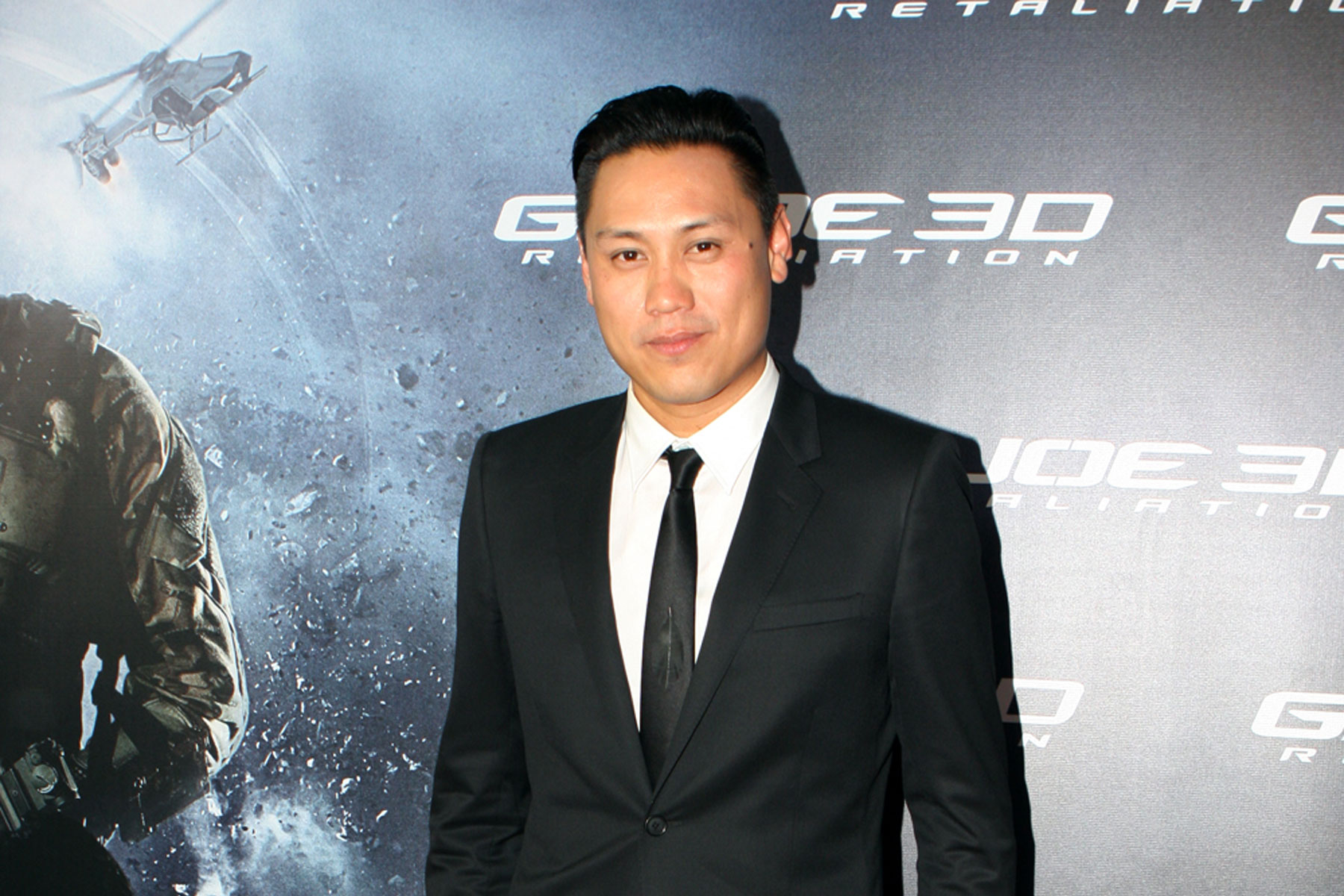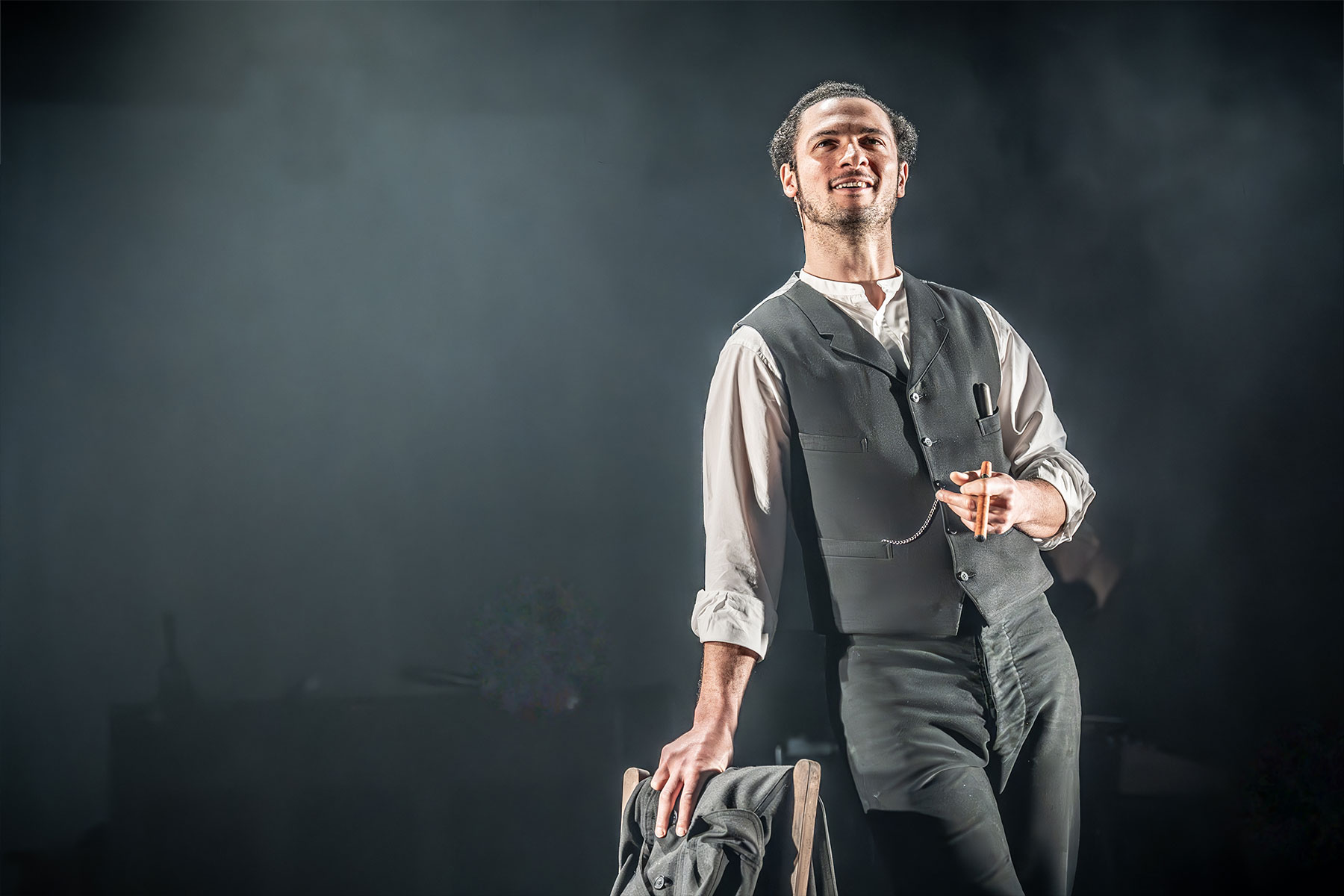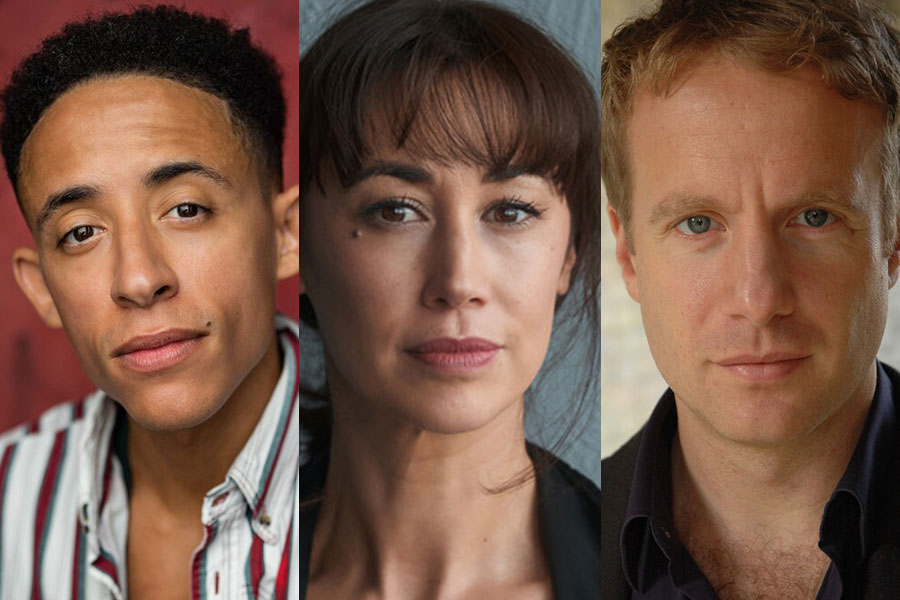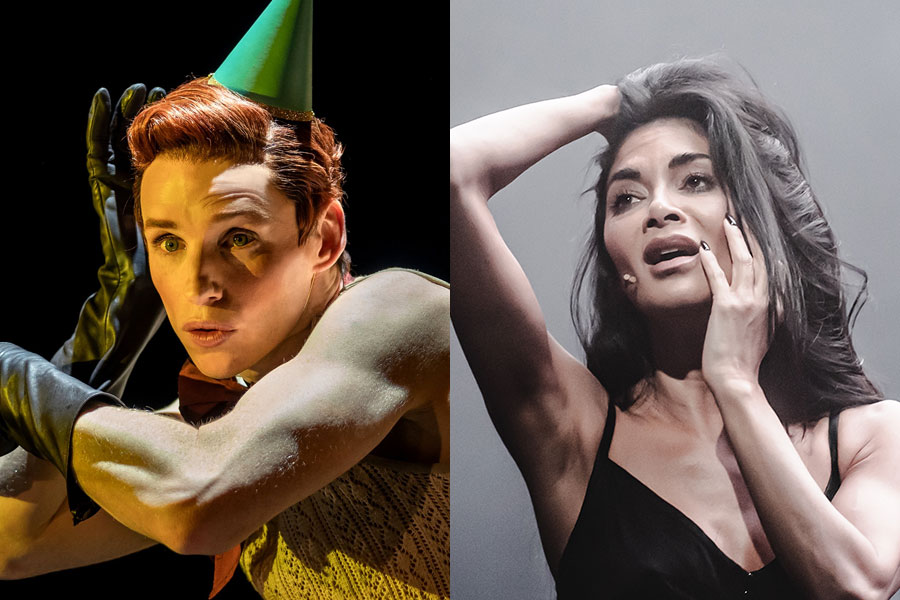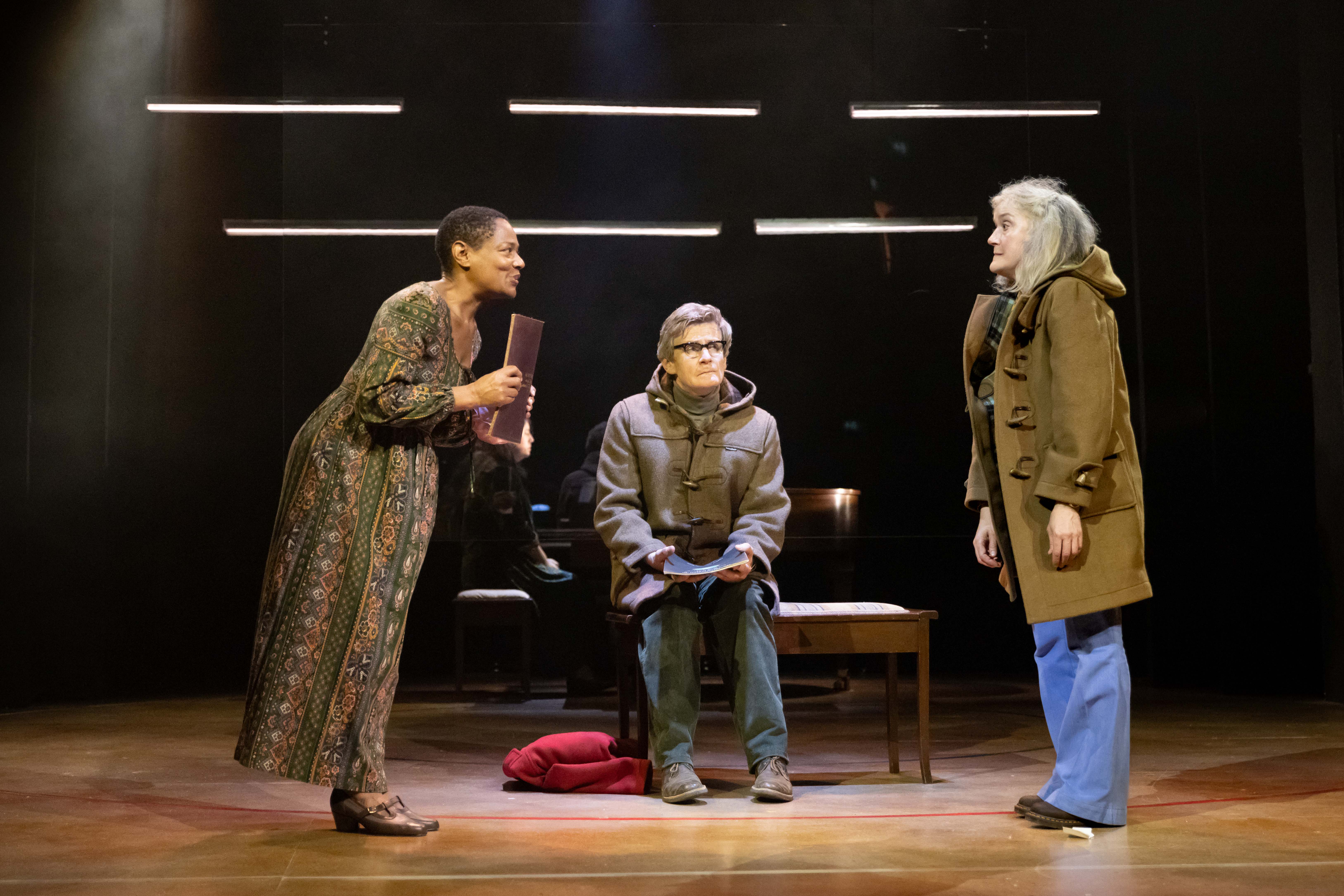…some trace of her
There is a really fascinating account in the programme for …some trace of her in the Cottesloe of the working method and rehearsal process adopted by director Katie Mitchell and her colleagues on this theatre-and-film version of Dostoevsky’s great novel The Idiot.
One isn’t necessarily looking for narrative consistency in this use of detailed close-up, conflicting yet complimentary imagery of screen and stage, maudlin string quartet music (played live) and endless fiddling about with camera angles, sound levels and lighting spills. But even if you’ve read the novel recently, you’d have a hard time guessing what the hell was going on.
Mitchell and her collaborators have at least understood very well that The Idiot is primarily a book about obsession and madness, and the show they present boils down to a succession of states of mind, whispered confessions of fear and loathing, love and helplessness.
There is a tragic symmetry in the love triangle of the unutterably beautiful Nastasya Filippovna (Hattie Morahan) and her rival suitors, the “mad” Christ-like Prince Myshkin (Ben Whishaw) and the impassioned merchant’s son Rogozhin (Jamie Ballard, recently Jonathan Miller’s Hamlet in Bristol). Encounters on trains and at parties are squashed together in a morbid gloaming which especially favours Whishaw’s unique brand of intelligent moping; he enacts the epileptic fit with frightening ferocity.
The National first produced The Idiot, in a stage version by Simon Gray, at the Old Vic in 1970. Derek Jacobi was the prince and a huge cast included Morahan’s mother, Anna Carteret, as a walk-on. It was a literal, heavy-handed evening. This is the opposite, and I suppose preferable, but it remains locked inside its methodology and curiously uninvolving.
Mitchell’s regular team of designer Vicki Mortimer, lighting designer Paule Constable and sound man Gareth Fry all provide skilled technical back-up, but this is not a revelatory Dostoevsky exercise to compare with the work of Tadeusz Kantor or Andrzej Wajda, whose 1994 film Nastasya is a compelling, hallucinogenic account of the book’s final chapter.
– Michael Coveney



